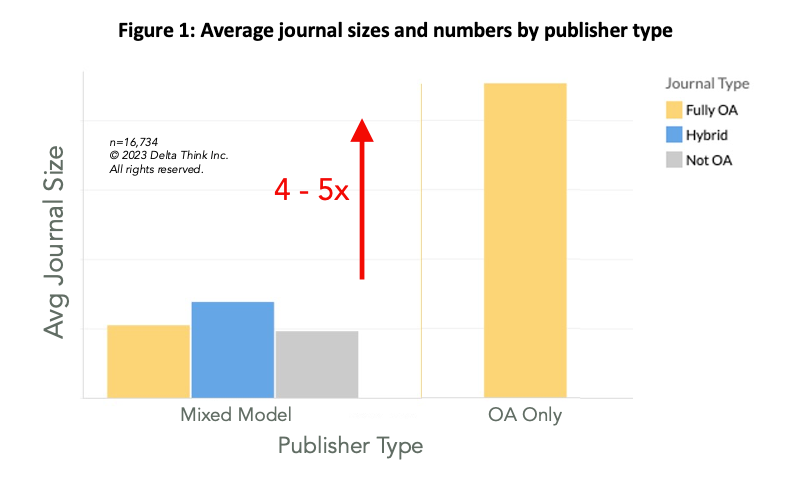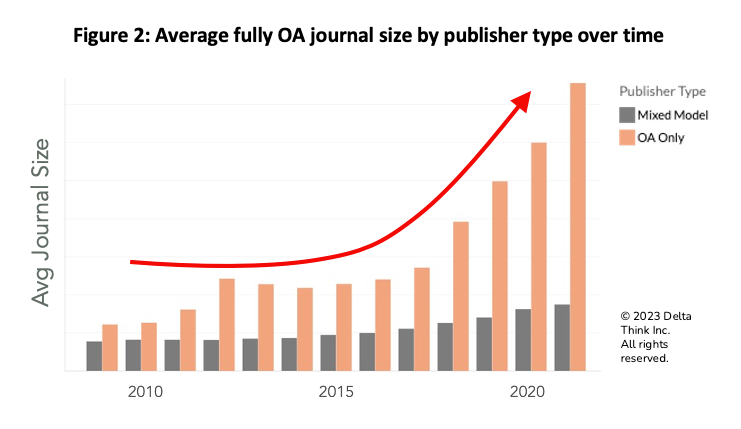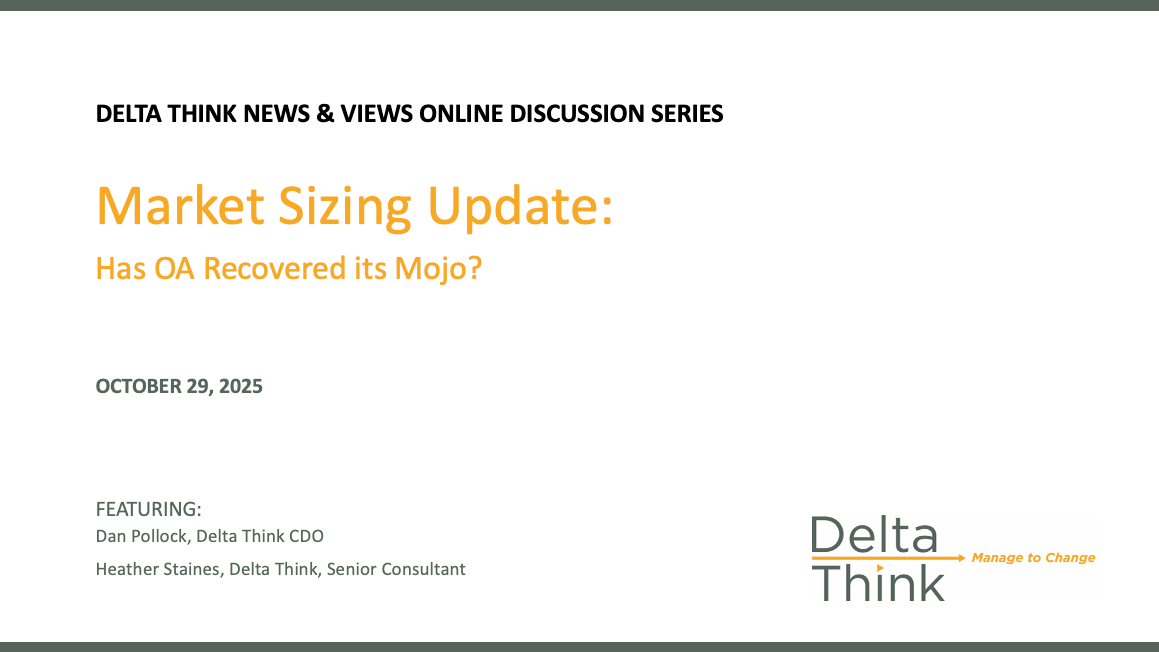News & Views: Fully Open Access Journals – Size Does Matter

This month, we look at how fully Open Access journals are managed differently depending upon who publishes them.
Background
Most publishers need to ensure that their income at least covers their costs, whether they are mission based or profit driven. Assuming constant prices, for open access publishing, income is driven primarily by the number of papers published. For subscription publishing, it’s driven primarily by the numbers of journals published. Costs scale based on numbers of papers for both. It would then be logical to assume that publishers focus increasingly on article volumes over numbers of journals as they publish more open access. But what do the data tell us?
For purposes of comparison, we split publishers into two types:
- Mixed Model publishers, which publish a mix of journal types: fully open, hybrid and those with no OA option. This category includes many established publishers.
- OA Only publishers, which only publish fully OA journals. This category includes PLOS, Frontiers and MDPI. For the purposes of analysis, it also includes F1000 and Hindawi. These are now owned by Mixed Model publishers, but they were born-digital fully OA publishers and so bear comparison with other publishers of similar ilk.
How different publishers scale
Patterns in output vary between publisher types and by journal type, as illustrated in Figure 1.

OA Only publishers publish more articles per journal.
- OA Only publishers’ journals contain 4 to 5 times as many papers as journals from Mixed Model publishers.
- While this is certainly expected for subscription and hybrid journals, this holds true for fully OA journals published by Mixed Model publishers as well. Fully OA journals at Mixed Model publishers are publishing far fewer articles than their OA Only publisher counterparts.
- When looking at fully OA journals, it appears that publisher type, rather than journal type, is a better predictor of journal size.
How the situation has changed over time
Figure 2 shows how the situation has evolved.

We can see that the large difference in average journal size discussed above hasn’t always been the case. Average fully OA journal sizes of Mixed Model publishers are shown in grey (the left-side of each pair of bars), and those of OA Only publishers in orange.
- Fully OA journals from OA Only publishers have always been larger than those from Mixed Model ones.
- A decade or so ago the difference was small, but journals from OA Only publishers have grown exponentially over the last few years.
- The jump in OA Only publisher journal size around 2012 was driven by PLOS One really taking off, against a background of relatively few titles at that time. As more OA Only publisher titles came out, the averages fell back slightly even though output was growing.
Conclusion
The scaling of fully OA journals shouldn’t be surprising. Unencumbered by physical print constraints, digital journals can simply publish more papers to meet demand – assuming the publisher workflows can keep up.
The economics of OA publishing support this too. As the publisher publishes more papers, income follows directly. The paper is the basic unit of economic output. Contrast this with a subscription journal, where greater throughput means more cost and less margin (surplus) until the publisher can increase prices. The journal is the basic unit of economic output, so the main way to justify greater subscription prices is to publish more journals and sell larger collections. The economics of fully OA journals favor growth in journal size, but those of journals relying on subscription income inhibit growth.
However, it appears that publisher type, rather than journal type, is a better predictor of journal size. Whatever the journal’s economics – and whether the organization is for profit or not – it seems that Mixed Model publishers continue to publish fully OA journals of similar sizes to their other journal types. OA Only publishers have historically published slightly larger journals, but the size of their journals has really taken off over the last decade.
It appears that Mixed Model publishers continue apply their tried and trusted subscription thinking to their fully OA journals. This means that they need to create more and more journals to keep up with demand, with all the overhead that implies. Meanwhile, the new kids on the block have no such qualms. Why publish more journals when you can simply publish more stuff?
This article is © 2023 Delta Think, Inc. It is published under a Creative Commons Attribution-NonCommercial 4.0 International License. Please do get in touch if you want to use it in other contexts – we’re usually pretty accommodating.







News & Views: Will cuts to National Science Foundation funding affect scholarly publishing activity?






